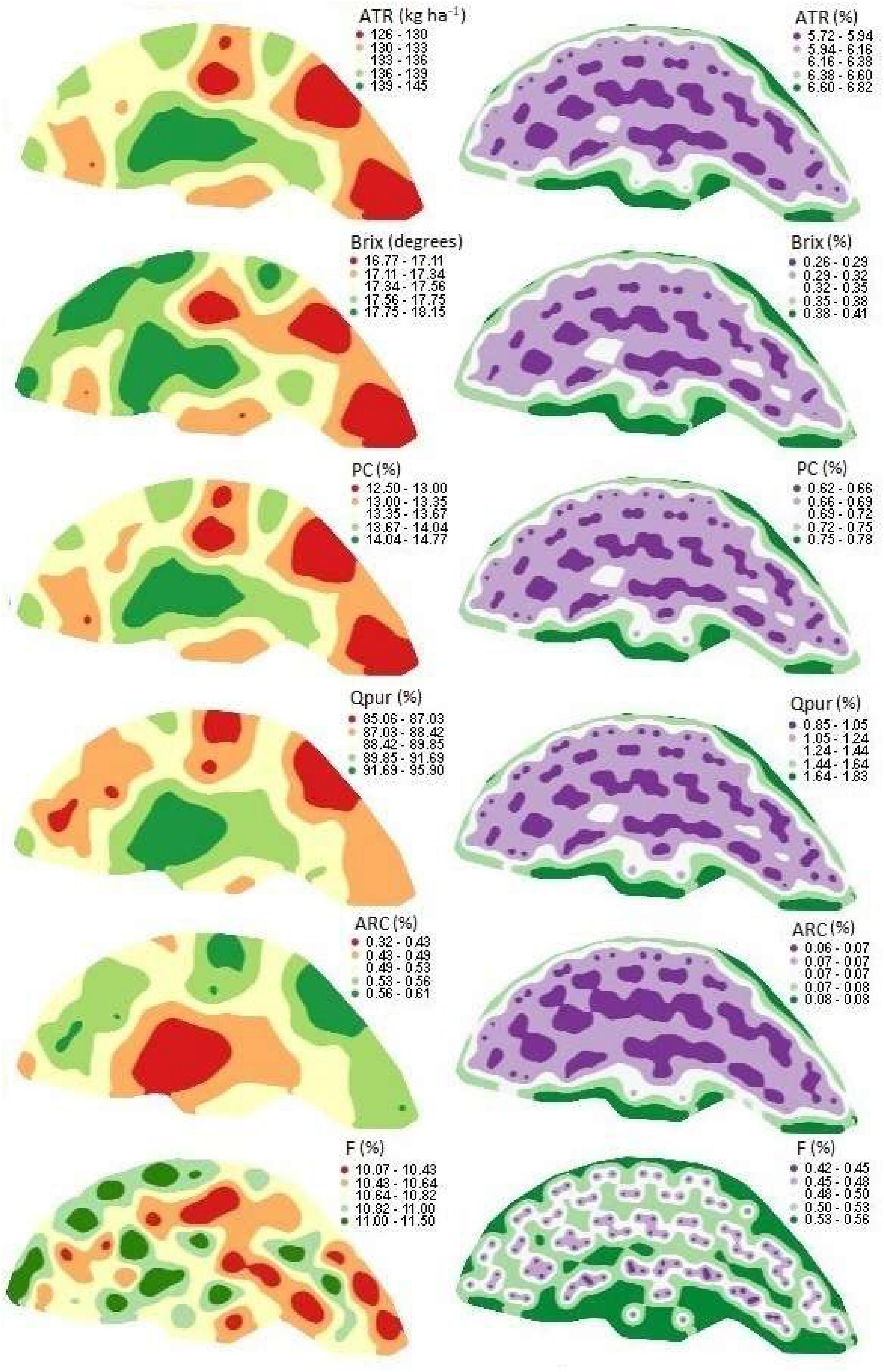ABSTRACT
Spatial variability evaluation of qualitative attributes can be used as an excellent strategy to design forms of intervention that result in better crop profitability for some agricultural crops, for example, sugarcane. Based on the assumption that qualitative attributes of sugarcane present spatial variability and their distributions along the stems are uniform in different varieties, this study aimed to evaluate the distributions of the qualitative parameters of different sugarcane varieties and the spatial variability of these attributes in a commercial field. Samples of nine varieties were collected for laboratory quality analysis, and the Brix parameter was analyzed by a digital refractometer. The analysis of variance, the Tukey test, and geoestatistcs were the statistical analyses applied to the dataset. The maps were generated using 91 sample results from the laboratory analysis of the 16.6 ha field. It was found that, in the harvest period, there was no significant difference in Brix content along the sugarcane stems. Therefore, we can conclude that the Brix content along the sugarcane stems does not change in the harvesting period, and the ideal sampling size to better represent the factors affecting sugarcane qualitative attributes is six points per hectare.
KEYWORDS
saccharose; technological quality; geostatistic





